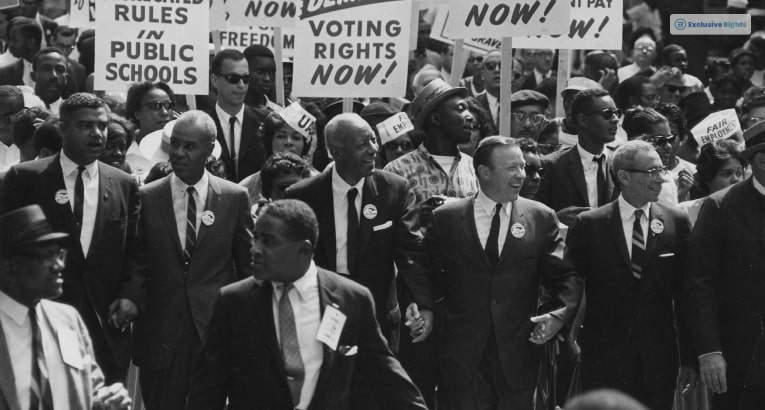
Table Of Contents
- Have You Ever Thought What Came Off The Civil Rights Movement? Where Did It Get Its Name?
- What Was The Civil Rights Movement?
- Famous Civil Rights Activists You Should Know About
- Doctor King Junior
- The Mother Of The Civil Rights Movement, Rosa Parks
- Malcolm X
- Is This Civil Rights Movement All About Racial Equality And Racial Justice?
- Gender Equality
- Civil Rights And The Economy
- Employment Rights
- Equal Treatment Under The Law
- Fight For Environment, Justice, And Peace
- What Are Civil Rights? How Do You Need Them In Your Daily Life?
- So What Are These Civil Rights?
- Why Are These Rights Important?
- What Civil Rights Came From The Civil Rights Movement?
- The Laws That Came Off It
- Key Take Aways Of The Civil Rights Act of 1964
- Key Take Aways Of The Voting Rights Act Of 1965
- Social Achievements Of The Movement
- Public Places Were Now Open To All
- There Was Equal Access To Education For All
- Workplace And Employment Equality For All
- How Did The Civil Rights Play A Part In The Movement?
- Freedom Of Speech
- Freedom Of Religion
- Freedom Of The Press
- Right To Assemble
- Right To Petition
- Other Civil Rights
- Civil Rights Movement And The 21st Century
- What Are The Communities Affected?
- A. African Americans
- B. Latin Community
- C. Native American Community
- D. Asian Americans and Pacific Islanders
- E. LGBTQ+ Communities
- F. People With Disabilities
- A Millennial Take On the Civil Rights Movement
- Black Lives Matter
- The Fight Against Unfair Voting Practices
- LGBTQ+ Rights Are Important!
- Efforts For Criminal Justice Reform
- Final Word!
A Millenial Take On The Civil Rights Movement
Remember the Classic “To Kill A Mockingbird” by Harper Lee? Attorney Atticus Finch faced the wrath of the community when he decided to defend an African American Slave who was falsely accused of raping a white woman. Unfortunately, racial segregation, discrimination was a very common occurrence before the civil rights struggle. African Americans who were brought into the country as slaves and personal property were subjected to inhuman treatment. If you want a greater idea of “how did the civil rights movement begin,” read on.
(Also, have you watched “12 years a slave” yet? If not, please do! It is an accurate description of what Black Americans had to go through as second-class citizens in the US back in the 20th Century.)
We have all heard of Malala Yousafzai, the great civil rights activist. We have all heard Tales of her courage when she survived a fatal Taliban attack. She won at life and went on to study in Oxford to become a global advocate for the education of girls in Afghanistan and all over the world.
We have all heard of Mahatma Gandhi and Martin Luther King Junior, the civil rights activist who contributed single-handedly to a huge part of the civil rights movement. He preached non-violent protest and acts of civil disobedience.
“I have a dream that one day on the Red Hills of Georgia, the sons of former slaves and the sons of former slave owners will be able to sit down together at the table of brotherhood. “
One of the most powerful symbols of the civil rights movement is this speech by Dr. Martin Luther King Junior.
A good majority of Americans and people all over the world still get Goosebumps while going through this revolutionary speech that changed the way people thought of apartheid forever.
In this article, we will talk about the major milestones of the Civil Rights Movement, its implications, and where the civil rights of the American man stand today in the 21st century.
Have You Ever Thought What Came Off The Civil Rights Movement? Where Did It Get Its Name?

How did this movement guarantee any rights, and what would you have missed if this movement never took place?
We are here to tell you exactly how important this movement was.
What Was The Civil Rights Movement?
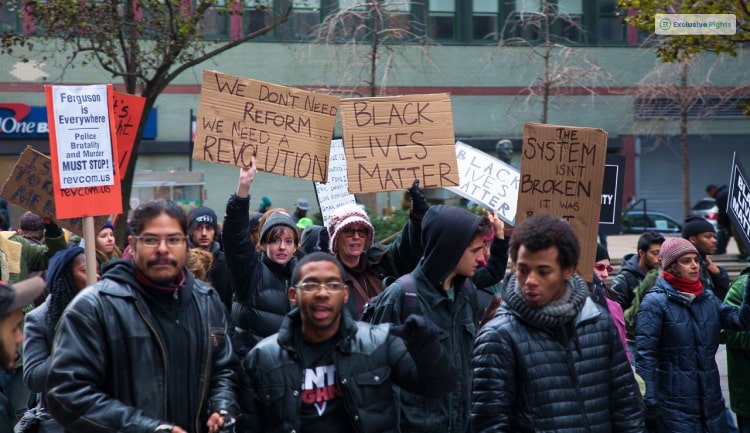
The civil rights movement was a social movement where non-violent protests and campaigns were carried on from 1954 to the mid-1970s. The aim was to abolish racial segregation and discrimination in the United States. To know about the origin of the movement, we must first understand what the reconstruction Era was. This Era existed from 1865 to 1878. The American Civil War had just come to an end, with the nation trying to integrate the Confederate states back into the Union States.
- Slavery as a lawful practice was abolished, and the United States Constitution was amended to give all slaves free and equal rights. The color of the civil rights movement started coming into the scenario.
- The 13th, 14th, and 15th Amendments were added to the United States Constitution. These amendments granted equal protection under the law, voting rights, and citizenship to people of all races and colors.
- There were quite a few backlashes, for instance, the Jim Crow laws that suppressed rights enjoyed by black people.
- After this period, the movement came into its full form.
The Civil rights movement was a pivotal struggle for equality and justice for all races and genders. These prominent figures made large contributions to this movement.
Famous Civil Rights Activists You Should Know About
They are the ones responsible for much of the current civil rights that you enjoyed today.
Doctor King Junior
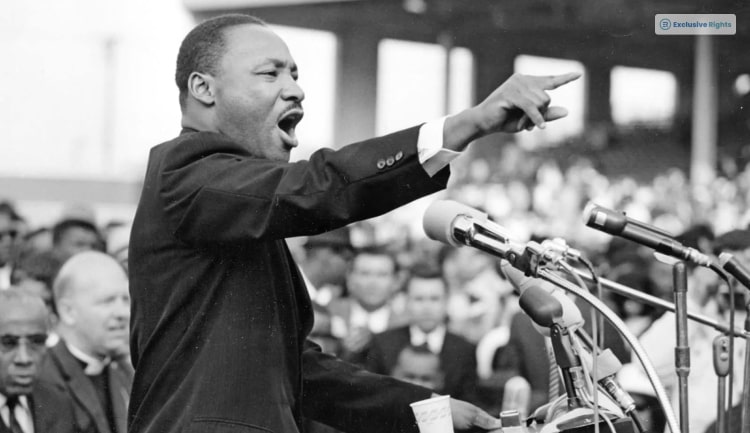
Martin Luther King Junior was a pivotal figure in the movement. He organized the Montgomery bus boycott in the year 1955 after Roza Park was arrested when she refused to give up her rights as a United States citizen. It was Martin Luther King Junior who fought for the Civil rights act of 1964 and also the voting rights act of 1965.
The Mother Of The Civil Rights Movement, Rosa Parks
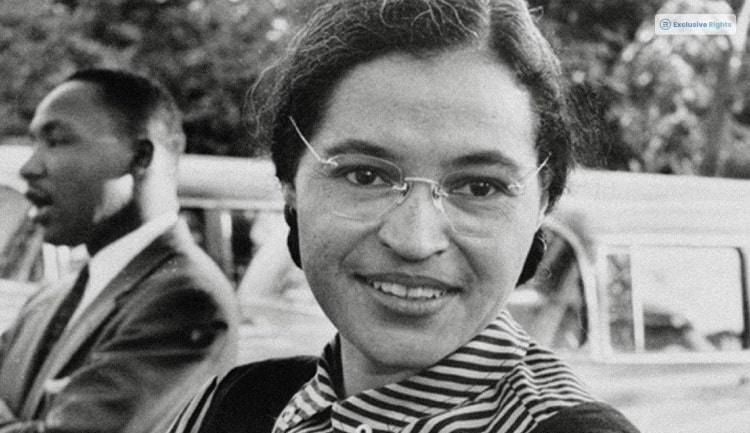
It all started when Rosa refused to give up her Bus seat in Montgomery to a white passenger. This led to the Montgomery bus boycott in the year 1955, one of the main milestones of the movement.
Malcolm X
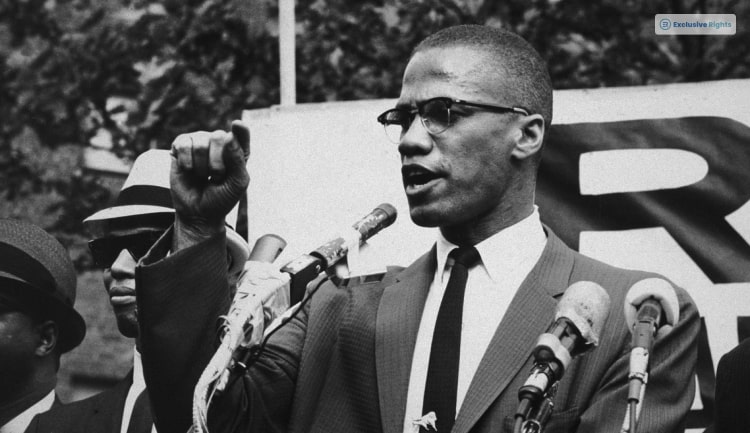
Malcolm X was another civil rights activist who encouraged black Americans to take pride in their cultural heritage and history.
Is This Civil Rights Movement All About Racial Equality And Racial Justice?

Although fighting against racial injustice is a big part of the movement, that is not all.
Gender Equality
Gender equality was also a significant goal of the movement. The Civil Rights Act addressed racial discrimination and also gender-based discrimination.
Civil Rights And The Economy
A fight against poverty to establish economic justice. Fighting for economic justice against poverty and systemic inequality was a big part of the movement. Doctor King was known to advocate for fair wages, affordable housing, and also fair economic policies.
Employment Rights
This movement was also a fight for equal political and financial rights for workers across the United States. Safe working conditions, employee insurance, fair wages, and addressing economic disparities in the masses made up a big part of the movement.
Equal Treatment Under The Law
Equal treatment, criminal justice reform, and educational equality made up a huge part of the movement for civil rights. Leaders fighting for Civil rights advocated for equal access to education for children regardless of their background, for addressing issues with the criminal justice system, and also for the right to a fair trial for all.
Fight For Environment, Justice, And Peace
The movement was not just an American issue but a global issue as well. The youth and citizens at large called foreign and to the inhuman conflicts going on in the Vietnam War
The communities being affected by environmental hazards called for the right to equal access to clean water, clean air, and safe environments.
What Are Civil Rights? How Do You Need Them In Your Daily Life?
If you have ever wondered why this movement was necessary, it should suffice to know that it is only by virtue of Civil Rights that today, Equality and Fair Treatment are ensured for all.
So What Are These Civil Rights?
Civil Rights are the fundamental rights and freedoms that every person enjoys as a citizen of the nation. The Constitution of the United States guarantees these rights regardless of the race, gender, religion, nationality, or other characteristics of the citizen.
Why Are These Rights Important?
These rights call for
- equal treatment of all,
- protection from discrimination, and
- the opportunity to fully participate in society.
Civil rights don’t just mean your right against discrimination. They encompass a wide range of areas, such as education, employment, voting, housing, and more. They are the rights that make society livable, inclusive, and peaceful, ensuring that you can live a respectable and dignified life.
What Civil Rights Came From The Civil Rights Movement?
The movement was a pivotal period in history that mostly aimed to end racial segregation, discrimination, and oppression in the United States. Its signature men of protests included:
- grassroots activism,
- nonviolent protests,
- and the tireless efforts to spread awareness by its leaders and participants.
Now let us look at some of the civil rights that were officially established and gained major recognition in the movement.
The Laws That Came Off It
The movement led to the passage of some very important laws, such as the Civil Rights Act of 1964 and the Voting Rights Act of 1965.
Key Take Aways Of The Civil Rights Act of 1964
The Act was passed as a result of the movement in the year 1964. It was a landmark piece of legislation that ended all forms of racial segregation and discrimination in public sectors.
- It criminalized all forms of discrimination based on race, color, religion, sex, or national origin in public places such as schools, workplaces, and public facilities.
- Title II of the Act settled the jurisdiction where this would be applicable. It was meant for all public accommodations that were frequented by citizens on a daily basis, such as restaurants, hotels, theatres, and other public places.
- Title VI of the Act called to end discrimination in federally funded programs and activities. Federal funds are to be used for the benefit of all. This ensured that institutions that run on federal funds could not discriminate on the basis of race or other protected characteristics.
- Title VII of the Act prohibited employment discrimination based on the same protected characteristics like one’s race, color, religion, sex, or national origin. For the very first time, the United States now had the Equal Employment Opportunity Commission (EEOC), where victims could file complaints about all forms of discrimination.
The Civil Rights Act of 1964 had a tremendous impact on the Democratic system of the United States. It played a major role in challenging the system to integrate diversity in schools, workplaces, and public spaces.
Key Take Aways Of The Voting Rights Act Of 1965
This was another one of the key legislations that took effect after the movement of Civil Rights.
- The Voting Rights Act of 1965 aimed to overcome barriers to voting that had been used to keep Black Americans, once brought into the nation as slaves, away from taking part in the democratic process.
- This Act is an important landmark as it targeted discriminatory practices such as literacy tests, poll taxes, and other measures taken to keep black citizens from exercising their right to vote.
- Section 5 of the Act required places most rampant with discrimination to get federal approval, called the preclearance before they could make any changes to voting laws or practices.
- After this Act was passed, the USA saw a substantial increase in the number of Black voters registered in the South (the states which had the most number of black slaves). It even led to a significant rise in the number of Black individuals elected to important posts in the government.
- This Act specifically targeted the obstacles that had suppressed Black voting rights. It marked a stepping stone to a more equitable democratic process.
These landmark legislations came in the immediate aftermath of the Civil Rights Movement , They brought about a new era of progress, inspiring movements for justice and equality for all citizens.
Social Achievements Of The Movement
The movement had far-reaching consequences when it came to the social situation of the American continent. It made the general public question racial inequalities. It brought about more chances of inclusivity and diversity.
Public Places Were Now Open To All
By the virtue of the movement as well as the Civil rights act there was desegregation of public spaces, such as educational facilities, transportation, and other areas. Activist Rosa Parks led the famous Montgomery bus boycott. This happened after she faced severe hostility after refusing to give up her bus seat to a white citizen.
People of all races could now sit together in restaurants, public places, buses, etc.
There Was Equal Access To Education For All
In the case of Brown versus Board of Education in 1954, the Court ruled that racial segregation in schools was unconstitutional. This means that the same school could now be attended by people of all colors and races.
Workplace And Employment Equality For All
The movement brought about equal employment opportunities no matter the citizens cast race or gender.
There was an overall change in public attitude and racial prejudices. Powerful speeches, media coverage, and protests taking place throughout the movement brought about societal awareness, empathy, and understanding in the masses.
How Did The Civil Rights Play A Part In The Movement?
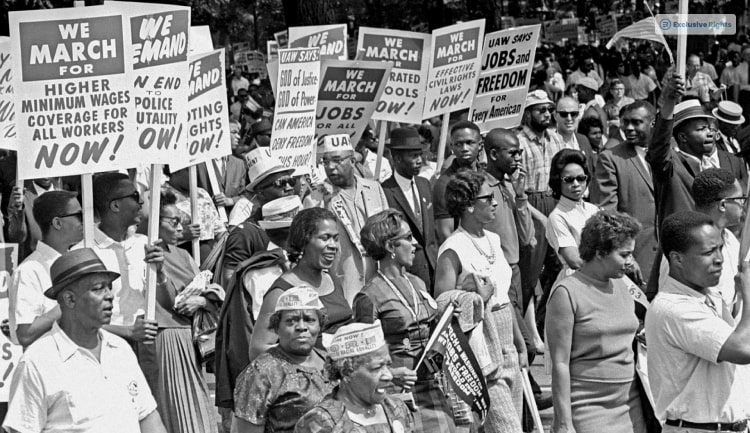
If you think that the Civil Rights Movement is a thing of the past, you would be mistaken. To date, there are multiple uses of these civil rights that you enjoy each day. All of the ones stated below were reinstated in the civil rights movement. Let us have a look at some of them, shall we?
Freedom Of Speech
The First Amendment of the Constitution protects the right to express opinions, beliefs, and ideas without government censorship. This right was upheld time and again by the protestors and activists during the movement.
There were numerous implications of civil and constitutional rights throughout the course of the Civil Rights Movement.
- A great example is the March on Washington for Jobs and Freedom, 1963. The historic march saw an overwhelming participation of 250,000 people and more in Washington, D.C. Here, Dr. Martin Luther King Jr. delivered his iconic “I Have a Dream” speech. This speech is the embodiment of the freedom of speech.
- The Summer of 1964 or The Freedom Summer. The voter registration campaign took place at that time. There, the civil rights activists spread their message of equality through public speeches, leaflets, and community meetings. This is how the activists exercised their freedom of speech to encourage people of color to vote despite intimidation or opposition.
- Another incident where the activists used this civil right was the Birmingham Campaign of 1963. The Birmingham Campaign confronted the unfair aspect of racial discrimination. Dr. Martin Luther King Jr. wrote the compelling “Letter from Birmingham Jail”, to express his views on the nonviolent protests and civil disobedience of the movement.
Freedom Of Religion
The First Amendment to the United States Constitution protects this right. You are free to practice any religion or none at all. Civil rights activists and leaders took comfort and strength in their religious beliefs to advocate for social justice, equality, and the end of racial segregation. Religious texts such as the Bible, Quran, or the Bhagwad Gita, emphasize principles of justice, equality, and dignity. Martin Luther King Jr and a few other activists were deeply religious. They rooted their activism in their faith. This helped the masses unite.
Freedom Of The Press
This right was used to an extensive point during the movement. There were numerous media outlets busy covering the stories and struggles of the activists, bringing their blood and sweat to the forefront of the movement.
Journalists could exercise this right to report on incidents of racial discrimination, segregation, police brutality, and civil rights violations. The reporters and journalists covered nonviolent protests, sit-in protests, marches, and demonstrations led by civil rights activists These reports informed the public about the systemic racism and inequality seen in many parts of the United States. Photojournalists were able to capture accurate images aptly documenting police brutality, KKK violence, and peaceful protests by the activists.
To this date, this is one of the weapons of political journalism using which the media organizations to report news and express opinions without government interference.
Right To Assemble
The First Amendment guarantees the right to gather and peacefully protest or demonstrate. The protestors and activists of the movement exercised this right to peacefully present their demands to the government.
- During the Montgomery Bus, black citizens who were residents of Montgomery, Alabama, boycotted segregated buses in an effort to challenge racial discrimination. Their unity during assemblies was supported by this fundamental right.
- During the March on Washington for Jobs and Freedom 1963, a large part of the US population gathered in Washington, D.C., as a form of protest. It all ended with the iconic “I Have a Dream” speech by Dr Martin Luther King Jr.
- In the event of Selma to Montgomery in March of 1965, activists exercised their right to assemble in demand for equal voting rights. This drew national attention to racial discrimination.
- During the Freedom Summer in 1964, assemblies and meetings were organized by volunteers to empower local communities and also provide educational resources.
Right To Petition
All citizens of the United States have the right to address the government regarding their grievances and requests for change. This was also a civil right used thoroughly by civil rights activists during the movement.
- The “We Charge Genocide” Petition was brought about in the year 1951. It was presented to the United Nations to accuse the US government of committing genocide against Black Americans. Racial violence and systemic discrimination were brought to notice by this petition.
- The “We Demand Freedom” Petition was one of the major ones of the year 1963. It was organized by the Student Nonviolent Coordinating Committee (SNCC). Presented to Congress, it demanded an end to segregation and racial violence.
- The “Anti-Violence Petition” was signed in the year 1964. It was an especially important one as it brought to light the murders of civil rights activists James Chaney, Andrew Goodman, and Michael Schwerner in Mississippi. The petition was signed by over 500 writers, artists, and intellectuals demanding an immediate end to racial violence and discrimination.
Other Civil Rights
The Equal Protection Clause was brought into force by the Fourteenth Amendment. It ensures that all citizens are treated equally under the law.
- The Equal Protection under the law and Equality before the law concepts were integral to the civil rights movements. The landmark Supreme Court case of Brown v. Board of Education declared that racial segregation in public schools was completely unconstitutional. This was considered to be an important victory for the movement.
- Your Right to Due Process is also protected by the Fourteenth Amendment. It ensures that an individual cannot be deprived of their right to life, liberty, or property without fair and transparent legal procedures.
- The Emmett Till Case of 1955 was also a major one in this aspect. It established that the lack of justice for Black victims in the legal system was a violation of the due process clause.
- The Right to Privacy is not mentioned in the Constitution of the United States. However, this civil right is protected through various federal legislations and precedents.
- The Supreme Court recognized the right to privacy in cases like Griswold v. Connecticut (1965) and Roe v. Wade (1973). The privacy of all citizens of the United States was valued, no matter their cast, creed, color, or background.
- The right to vote is protected by various amendments and laws, including the Voting Rights Act of 1965. The right to vote was a central and hard-fought right for all marginalized groups in the United States. African Americans and people of color in the South were primarily brought into the country as slaves by the Europeans. They faced a range of voter suppression tactics, like literacy tests, poll taxes, and grandfather clauses.
- All were steps to prevent them from registering to vote. Various Activist organizations like the Student Nonviolent Coordinating Committee (SNCC) and the Congress of Racial Equality (CORE) made great efforts to end this discrimination. As discussed above, the Voting Rights Act was introduced in the aftermath of the Civil Rights Movement.
- The Fair Housing Act of 1968 prohibits discrimination in housing based on race, color, religion, sex, national origin, and more. This meant that all citizens of the United States, no matter their religion, creed, racial background, or nationality, could enjoy housing facilities in the USA.
Civil Rights Movement And The 21st Century
Have you heard about the Black Lives Matter Movement or the #MeToo Movement for that matter? If you have, know that even in the 21st century, the Civil Rights Movement that took place too many decades ago continues to make its way into young minds and citizens suffering from human rights violations.
Now and again, we find ourselves Googling “I have a dream,” in hopes of inspiration, in search of comfort in the fact that these civil rights activists fought day and night and displayed exceptional moral fiber to stand up for what is right. They protested so that we could have an America worth calling home.
What Are The Communities Affected?
The Civil Rights Movement continues to evolve and manifest in various ways. It reflects both the progress made and the ongoing challenges faced by the multiple marginalized communities in the US.
A. African Americans
Most African Americans have roots in West and Central Africa. They were brought to the continent first and then the United States around the 17th, 18th, and 19th centuries. The condition in which they were brought in was brutal. The forced demands of slaves were to cater to the ever-growing tobacco, cotton, and other industries in the USA. As slaves and later on as oppressed individuals, they endured centuries of racial discrimination, manifesting through multiple forms. Slavery, segregation, voter suppression, prejudices, and the like.
B. Latin Community
This community stems from the Indigenous populations of America, European colonization, and also African enslavement. They are most commonly descendants of the native communities. Immigration has brought individuals from various Latin American countries for economic opportunities, political instability, and family reunification as well. They face various problems on a daily basis, such as lack of access to healthcare, wage disparities, discrimination, and underrepresentation.
C. Native American Community
We all know how Thanks Giving came into being. However, did you know the violent history that lies behind it? European settlers forced the Native Americans out of their own land when they colonized the USA. There were subjected to forced removals, forced erasing of their languages and traditions, broken treaties, and the loss of ancestral lands. Some tribes continue their struggle to date for federal recognition. This has had a major effect on their ability to access resources and uphold their sovereignty.
D. Asian Americans and Pacific Islanders
These communities experience being subjected to stereotypes, language barriers, and limited representation. This community saw an immediate increase in hate crimes and discrimination during the COVID-19 era.
E. LGBTQ+ Communities
If you are a regular reader of new articles, or our blogs for that matter, you must be well aware of the ongoing challenges faced by LGBTQ+ individuals on a daily basis. They face discrimination, unequal legal protections, and homelessness and violence higher than the average cis-American. Transgender people, transgender women of color, deal with appearance-related, gender and opportunity-related hostilities very regularly.
F. People With Disabilities
People with disabilities, physical and mental, face difficulties with a lack of physical access, employment discrimination, and unequal educational opportunities. They are also subject to ridicule and insults by their peers and society.
Any such individual can use the Americans with Disabilities Act as a basis for discrimination and demand relief.
A Millennial Take On the Civil Rights Movement

The first one on this list would surely be the Black Lives Matter movement. The movement was well overdue. Police brutality was at an all-time high. However, the deaths of known figures like Michael Brown, Trayvon Martin, Eric Garner, and George Floyd brought a lot of negative attention to the police departments of the USA.
Black Lives Matter
The “Black Lives Matter” came as a saving grace. This movement was a powerful one seeking an end to racial profiling and harassment by law enforcement.
In Ferguson v. City of Charleston, 2001, illegal searches and seizures were marked legally and morally wrong. The victims were pregnant African American women at a hospital.
The Black Lives Matter movement also brought to light hundreds of black victims who were targeted to brutal treatment just because they belonged to a certain race.
The Fight Against Unfair Voting Practices
These are the efforts taken to combat voter suppression, gerrymandering, and tampering with ballot boxes. The government has been taking strict measures to deal with these unlawful practices. Mr. Trump has recently been under strict scrutiny for trying to alter the results of the 2020 Presidential election.
LGBTQ+ Rights Are Important!
The Civil Rights Movement expanded to include LGBTQ+ rights. These now include the fight for marriage equality, anti-discrimination laws, and equal treatment under the law.
In the case of Obergefell v. Hodges, same-sex marriages were legalized nationwide, marking a significant victory for the LGBTQ+ rights movement.
Efforts For Criminal Justice Reform
Advocates for civil rights saw the need to fight for equal and fair practices in sentencing, mass incarceration, and the school-to-prison pipeline systems. This was done because a lot of civil and human rights activists felt that not all criminals were driven by the same need to commit a crime. Some deserved a second chance as well.
They have raised their voice in eliminating mandatory minimum sentences and investing in programs for rehabilitation and diversion.
In the famous case of Miller v. Alabama, the court ruled that mandatory life sentences without the possibility of parole for juvenile offenders were indeed unconstitutional. This showed that young minds needed fair treatment and a chance to choose a better life.
Final Word!
The Civil Rights Movement remains important to date as it has set up the framework for protests and struggles against all forms of discrimination.
- Movements for immigrant rights,
- immigration policy reform,
- protection for undocumented individuals, and
- against family separations come to light every day.
Rigorous attempts to promote Gender Equality like #MeToo were successful in exposing sexual harassment and assault in all spheres. Moreover, the modern feminist is now more aware of
- pay equity,
- workplace protections,
- reproductive rights, and
- legal abortion services.
The Civil Rights Movement taught us to be aware of our rights and fight for them.
Read More:





